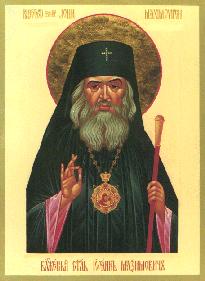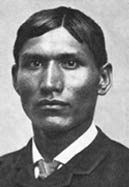American Indian History Survey Course Texts: Part I
When you go to a bookstore next, if it's a bookstore carrying books worth reading in general (hopefully I don't have to explain what "worth reading" means), look for the section on Native Americans, if there is one. Some stores try to sneak them all into the Anthropology section or, worse, break up the whole collection by filing their titles under other categories.
The Native American section should have, more or less, 4 basic sub-sections:
1. General books on Native Americans: historical surveys, coffee table books, picture books, chronologies, sweeping summaries, and the like.
2. Literature: myths, legends, stories, autobiographies, biographies, etc.
3. Academic books: dissertations, studies of particular tribes or customs, tomes on Indian customs and beliefs, and others.
4. Sappy crap. This is the most diverse and, sadly, interesting category. It includes New Age drivel on Native "spirituality" (in these books, it is sometimes indistinguishable from hippie Hindooism). Also, there are the radical university favorites--pathetic white hand-wringing works lamenting the losses of the Vanishing American and angry Indian authors' anti-white, anti-American diatribes.
It's important to note that each category, even no. 4, has its own qualities and uses. They are all important for getting a grip on the last 1,000 years of interraction between Natives and non-Natives around the world. (For purposes of this blog, I'm dealing with Europeans and their descendants. The first interraction between Europeans and Native North Americans took place over 1,000 years ago, when Basque fishermen and Viking settlers and Orthodox missionaries first met indigenous inhabitants of modern Greenland and Northeastern Canada. The Basques were fishing to supplement the Western Orthodox population's Lenten diet and the Vikings, under Leif Erikson, were sent under King St. Olaf of Norway as part of the first Orthodox mission to America. The mission resulted in one martyrdom, that of a priest named Jon.)
I've chosen to highlight two books which serve as, I think, good basic general historical introductions. Each has, of course, its own strengths and weaknesses.
A History of the Indians of the United States, by Angie Debo.
Debo has a Ph.D. in history from the University of Oklahoma. Her book has a good overview of American Indian history. The book only goes to 1980, so it's incomplete. It's also somewhat dated as far as referring to indigenous societies as "primitive." However, Debo is able to look at things more or less objectively. One problem I have with the book is that she doesn't do footnotes. It's a shame. I'd like to know where she gets her horribly inaccurate information about the Russians in Alaska. She makes them into total barbarians, as have other 19th and early 20th century American historians and pseudo-historians. Aside from this, I thought she did a good, if sweeping, overview. I learned a lot more about the Dawes Act and Termination. She also shows some sensitivity to white America's cultural imperialism viz-a-viz Native America.
The Earth Shall Weep: A History of Native America, by James Wilson.
Mr. Wilson, from what I can tell, has no Ph.D. in history. Nor does he do footnotes either. I remeber when I read this book about two years ago, I was so angry. It read like a tale of ceaseless martyrdom. (Debo's book tends to be the same way, although she does write a bit about good things that have happened in Indian Country--in the broader-than-just-Oklahoma-sense.) His account of post-Wounded Knee history was rather confusing. What stands out is his glowing account of Collier's reforms.
Both books, however, claim to give a straight history, citing statistics and facts. This is misleading. "Fools Crow," which I'm reading now, gives a more rounded account. First of all, Fools Crow was more or less an eyewitness and a real American Indian. His thoughts on the Dawes Act are actually more positive than his thoughts on Collier. He also had a lot of nice things to say about generous white settlers living amongst the Sioux. I thought THAT was very intersting. If I were ever to teach a class on Native American history, I would assign the general histories as texts, but also the actual accounts of eye-witnesses. The voice of Native witnesses shouldn't be terminated. In many cases, these folks' accounts give far more accurate information than the accounts of historians, white or Native.









